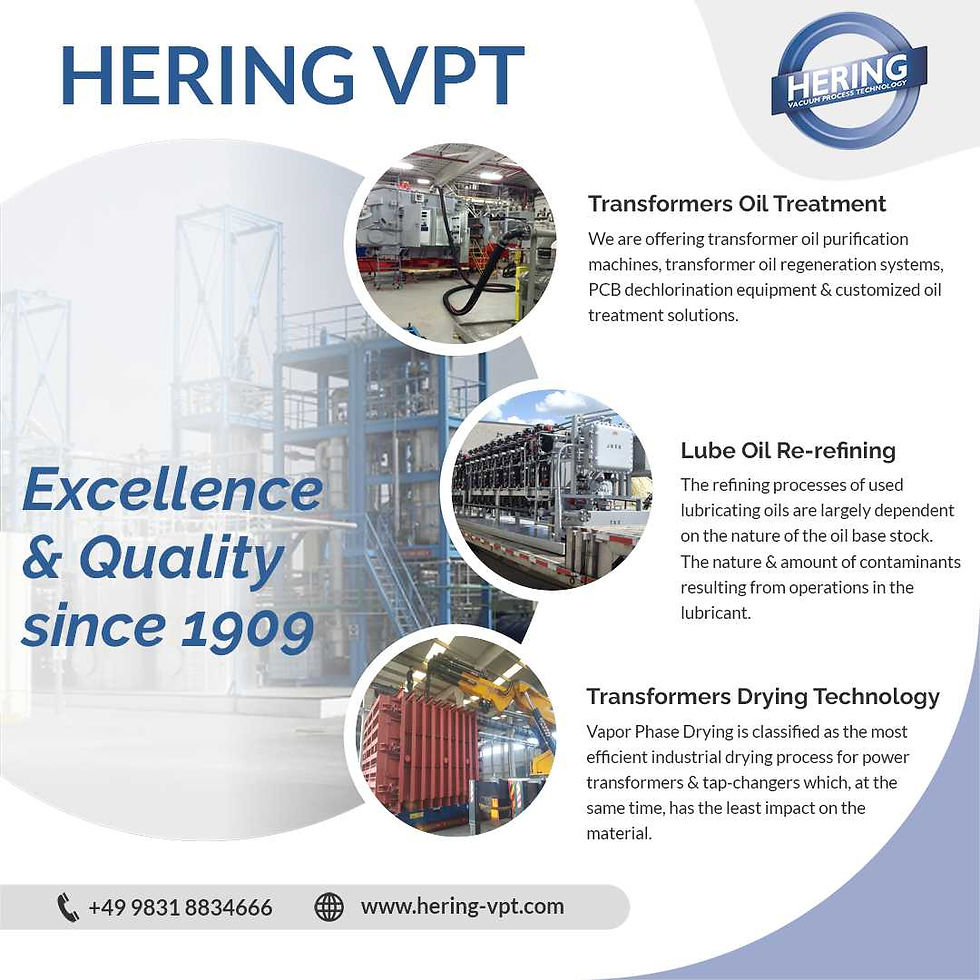Oil regeneration system and preventive maintenance
- oilfiltrationsyste
- Aug 4, 2021
- 2 min read
The increasing demand for electricity has taken a toll on transformers which are burdened with stress and overheating and result in breakdowns. The significance of maintaining the transformer insulating oil in good condition and mitigating oil deterioration has been widely acknowledged in the industry.
Ageing of transformers have received increased focus in the recent past, owing to their relation with oil deterioration and oil regeneration system of transformer insulating oil.
When oil and paper, the two main players of insulation, age, they produce acids and moisture. Such by products must be identified and removed so that ageing is controlled and longevity is enhanced.
Besides, measuring these byproducts reveal intensity of the ageing process. Acidity and humidity of the paper enlightens about the ageing that the cellulose insulation went through.
The physical, chemical and functional attributes of transformer insulating oil receives a beating when the oil is subjected to high temperatures, oxidation and contact with moisture. Such oil deterioration is however treated with oil regeneration system which not only protects the oil, but also restores the original quality and makes it as good as new.
Oil purification and oil regeneration restores quality in transformer insulating oil. While the former is done in earlier stages of oil deterioration, the latter is complex and not only removes impurities but also solves impurities like sludge and acids. Thus lifespan of the transformer insulating oil is extended.
When put through high voltages, water drops occur in the oil and such moisture content affects the dielectric strength of the transformer insulating oil and goes through arcing which increases carbon formation. In such oil deterioration, the insulating fluid becomes corrosive and damages the metal parts of the equipment.
Moisture is an important cause of oil deterioration. The moisture is either small droplets (emulsion) or settled as water in the bottom (demulsified water). The water settled in the bottom is removed by employing centrifugal treatment which also requires vacuum dehydration.
When the dissolved water gets accumulated in the paper insulation, the insulating properties are severely affected. Removing water content from the paper is a tedious process which involves drying out with heat and vacuum.
The moisture also speeds up the degradation of the cellulose material and accentuates oxidation. The chemical reactions result in polarization of oil molecules and end up as sludge formation.
Oxidation must be averted as much possible because oxygen reacts with inner parts of the transformer. The gaskets and seals of the apparatus need regular maintenance.
Single use Fullers Earth regeneration and multiple use reactivation regeneration are two methods employed to combat oil deterioration.
The transformer insulating oil is strained, heated and filtered before it goes through series of columns which comprise the regeneration system. Oil purification involves dehydration and degasification and the quality of the transformer insulating oil thus reaches an eligible and as good as new status.
On a concluding note, regeneration system of transformer insulating oil and minimizing oil deterioration cannot be afforded to be taken in a lighter note. Besides maintenance of transformer insulating oil avoids repairs and adds to the profit accounts.
http://www.hering-vpt.com/products/transformer-oil-regeneration/



Comments